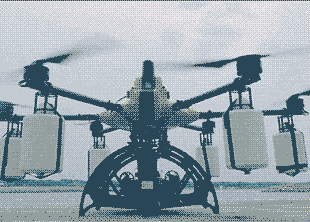Japanese companies KDDI, Prodrone and Chinese Qysea showed a system of a multicopter and an underwater robot. The multicopter delivers the robot to the dive site in the cage, sits on the water and releases it. The robot dives and transmits the video from its camera to the operator. After that, the drone takes the robot back, pulling it up with a cable.
Underwater robots can do a lot of useful things. For example, record the behavior of fauna, search for mines, lure fish and release other underwater robots. But it can be difficult to get them to the dive site, and often additional transport is needed for this — at least a boat.
You can simplify this process if you combine an underwater robot with a drone. In 2020, such a project appeared with British engineers. They have developed a hybrid device from a quadrocopter landing on water and a robot with a camera that can swim underwater.
The system of KDDI, Prodrone and Qysea companies, which they recently showed at the Hakkeijima Amusement Park, works on the same principle. It consists of a Prodrone multicopter and a Fifish Pro V6 Plus robot from Qysea, which can dive to a depth of up to 150 meters. The operator on the shore sends the drone to its destination and puts it on the water — buoys are attached to the shoulders of the multicopter, allowing it to stay afloat. All this time, the robot is in a cage attached to the drone.
After landing, the multicopter releases the Fifish from the cage, and it plunges into the water, but remains in touch with the drone thanks to a long cable. The operator controls the robot remotely and receives a video broadcast from it. At the end of the mission, the drone pulls Fifish up to him, locks him in a cage again and flies back to shore. The developers say that their system is suitable for operational inspection, rescue operations and scientific work.
Instead of creating pairs of flying drones and underwater robots, some engineers are developing drones that can move in the air, on the water and underwater. For example, such as Loon Copter and CRACUNS quadrocopters .
Vasilisa Chernyavtseva

